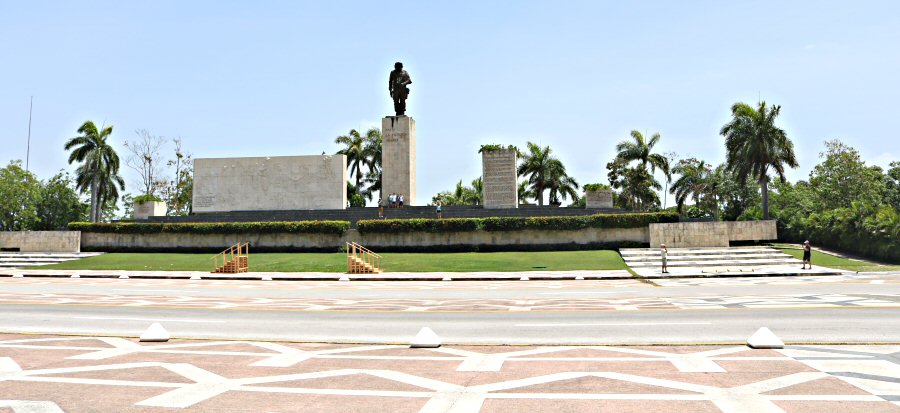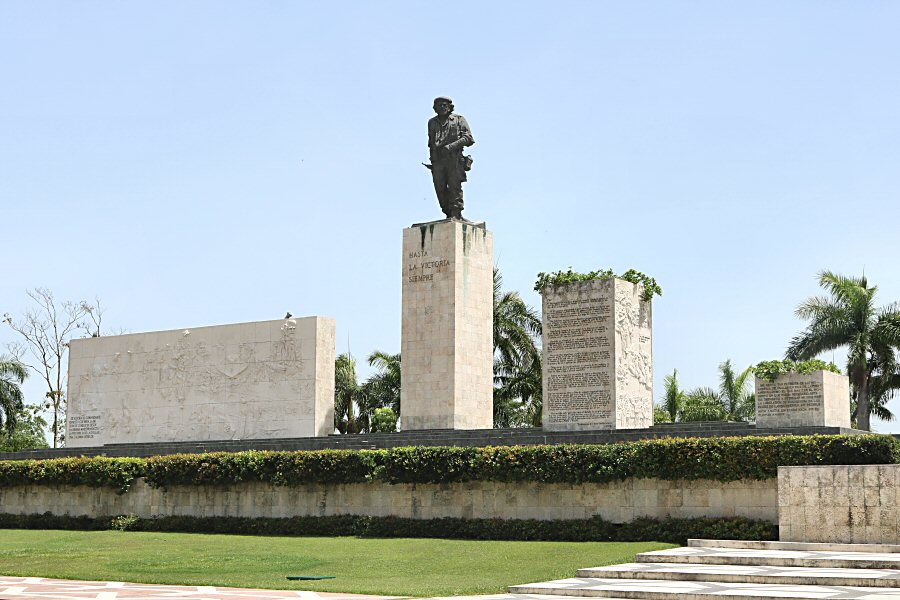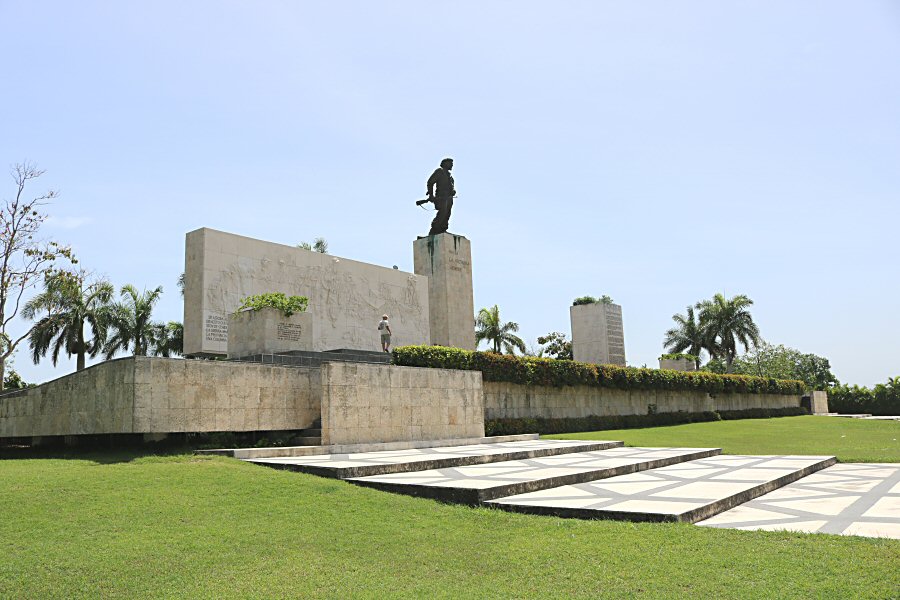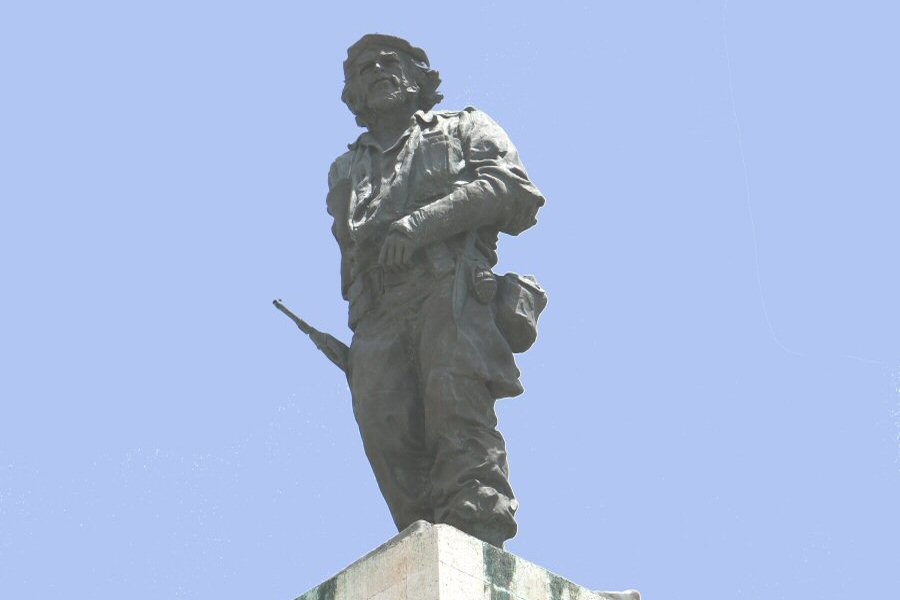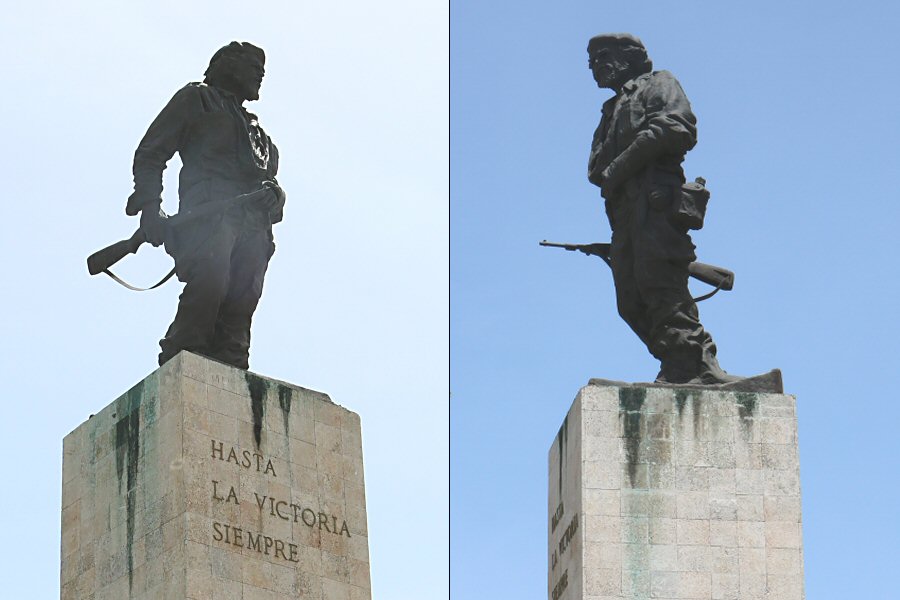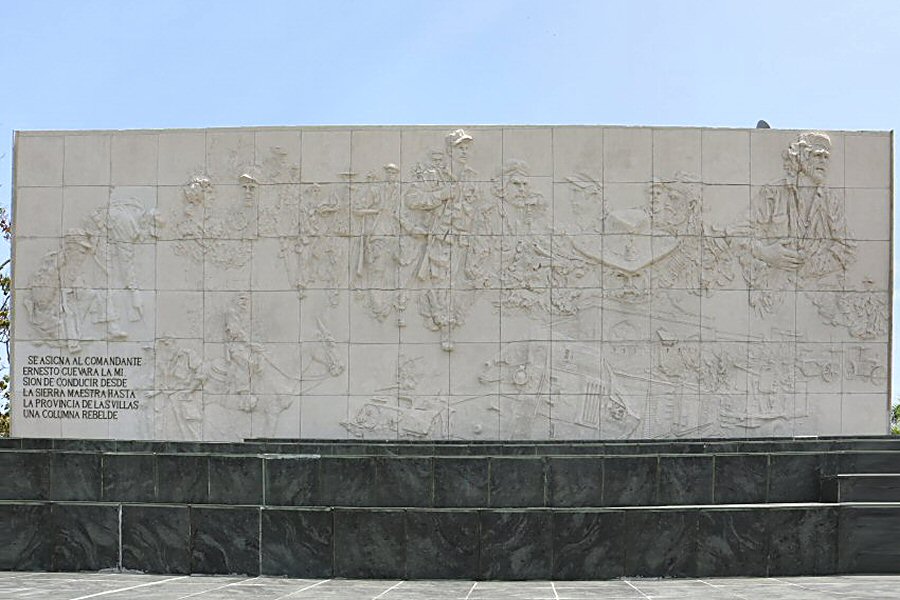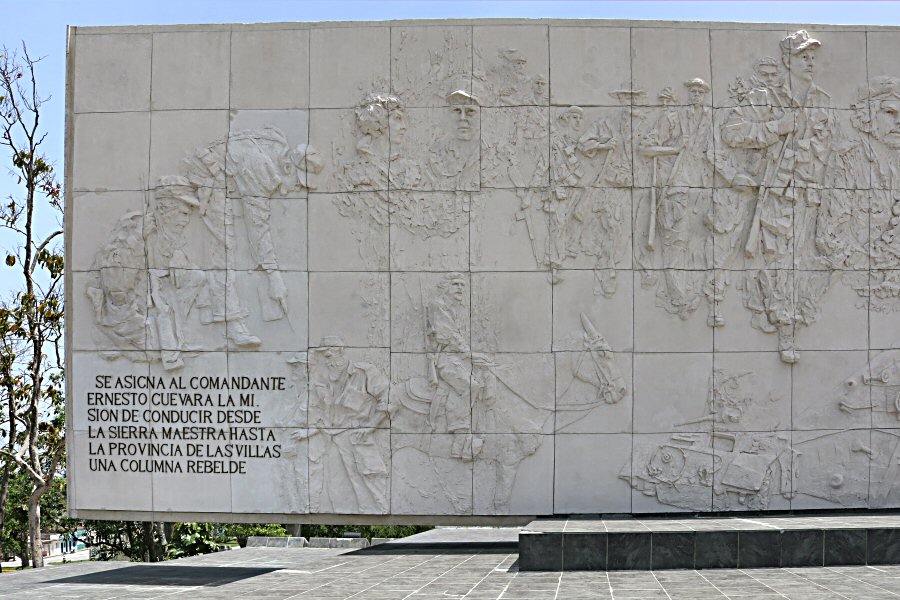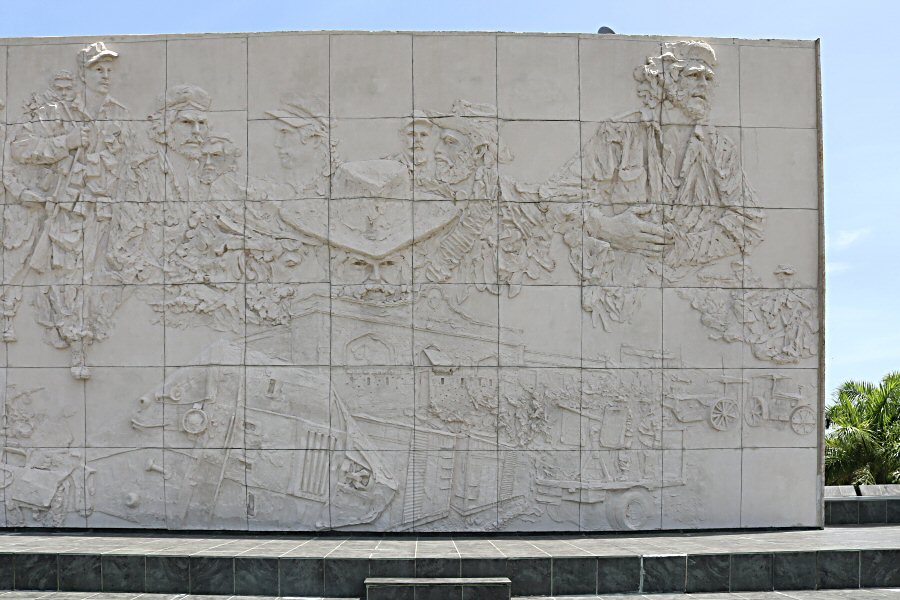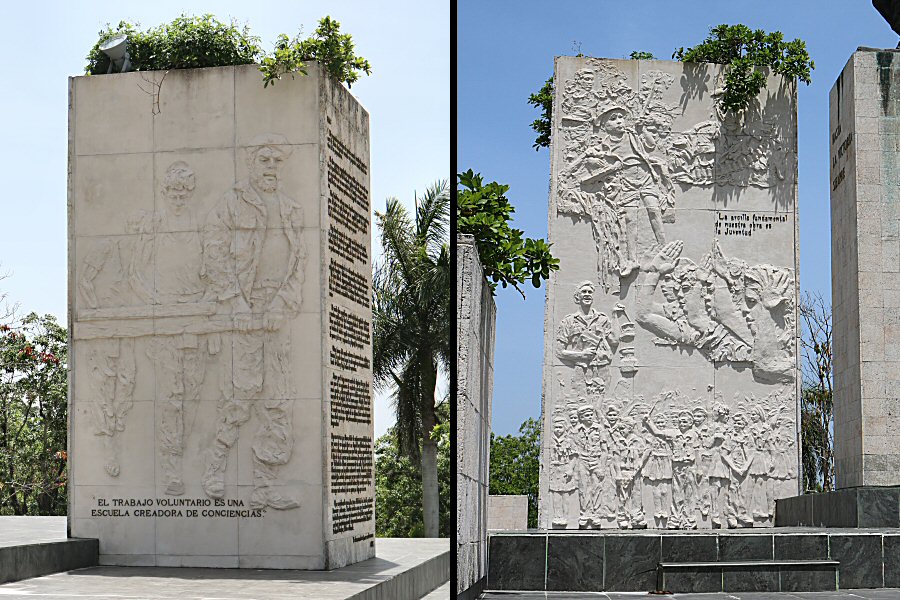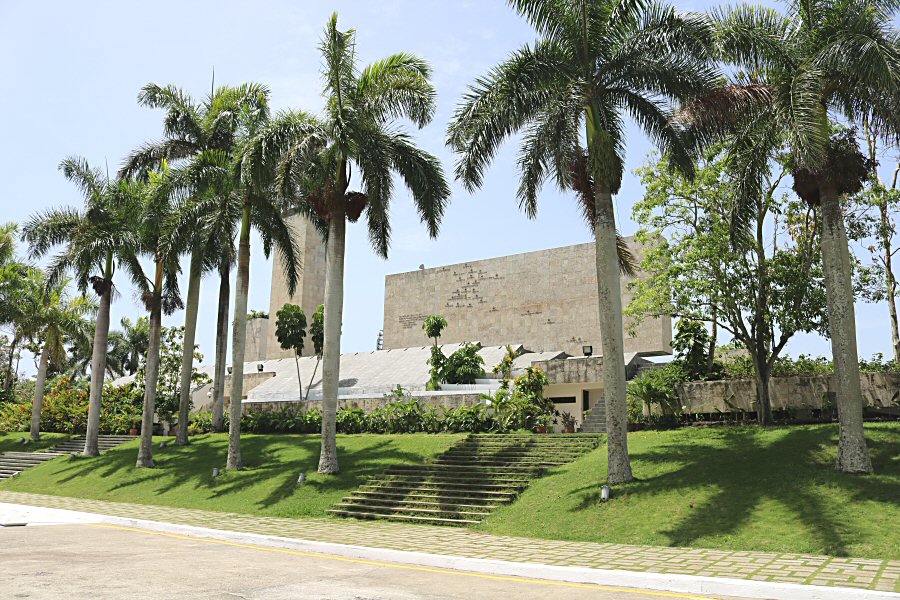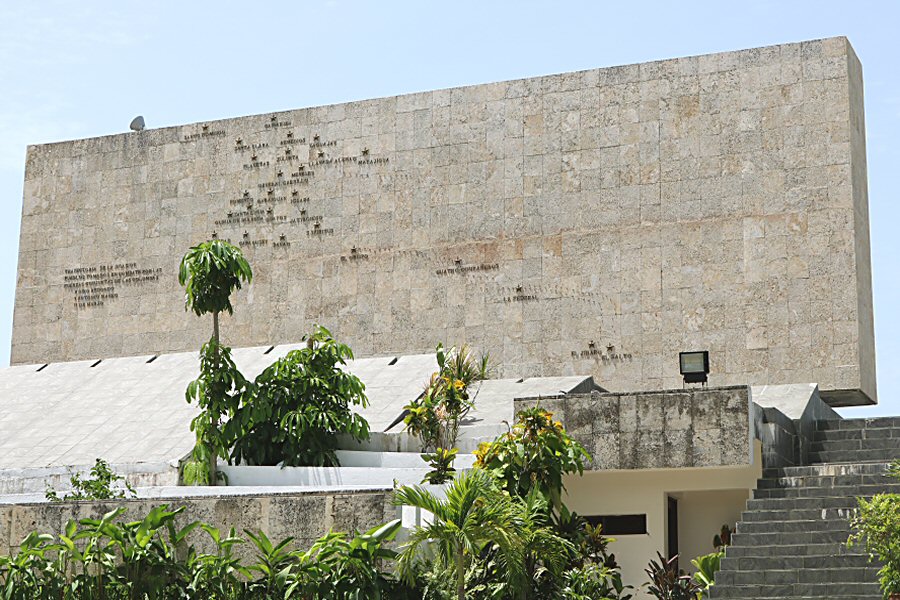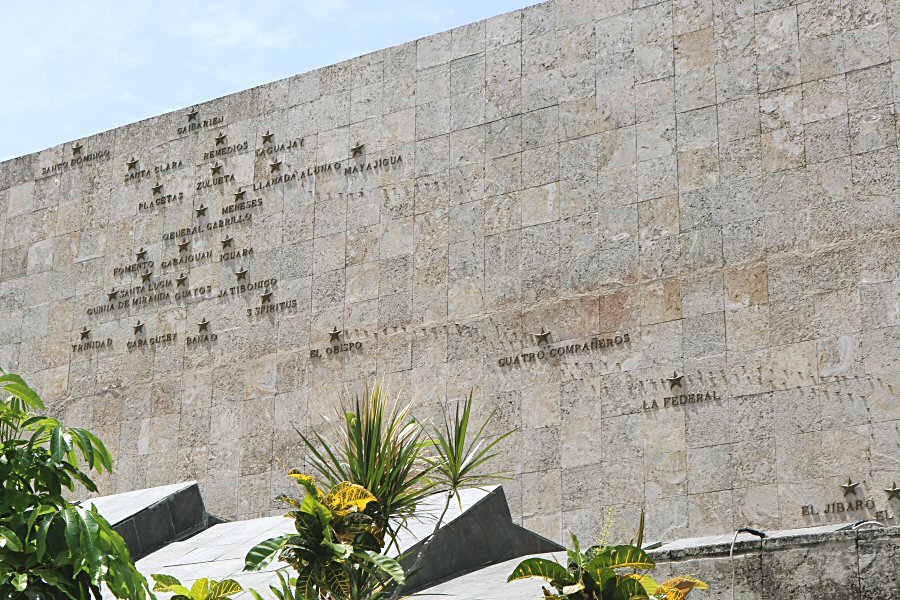Why Santa Clara?
The reason why the city of Santa Clara was chosen for the Che Guevara mausoleum is that the Battle of Santa Clara, in which Che showed great success by opening the doors to the victory of the revolution. The Battle of Santa Clara was crucial for the victory of the Cuban revolution.
A group of nearly three hundred rebels under the command of Che Guevara arrived in the region on December 28, 1958 and took the region under full control in just 3 days. They captured Santa Clara which was protected by tanks, artillery, and thousands of infantry, in just 12 hours. The great possibility of the fall of the city to the rebels, coupled with the seizure of a train loaded with weapons and ammunition which were loaded to be sent to troops in the east of the island, led Batista to realize the end was near. He fled to the Dominican Republic without waiting for the fall of Santa Clara at dawn of January 1, 1959. Revolutionary forces under the command of Fidel Castro and Camillo Cienfuegos entered Havana on January 8, 1959, seized control, and declared the victory of the revolution.
The Project
The idea of erecting a monument specifically commemorating Che Guevara, originated with Victor Bordón Machado. Until that date, the remains of the legendary guerrilla had not yet been found. Victor Bordón, who fought alongside Che Guevara in the Escambray Mountains, was one of the first to join the armed struggle against the Batista regime and rose to become President of the Tribunales Revolucionarios, the supreme court responsible for trying counter-revolutionaries.
Victor Bordón commissioned renowned Cuban sculptor José Delarra to develop a project. Everyone agreed that such a monument, befitting Che, should be in Santa Clara, but there was disagreement about the exact location. Initially, Capiro Hill, the highest point in the city and symbolic of the Battle of Santa Clara, was considered, but the planned monument proved impossible to fit there. As the sculptural ensemble and the general elements of the plaza gradually emerged, the decision was made to build it on the elevated site where it now stands, despite it had no direct connection to the epic event of 1958.
Construction work started on June 14, 1987. The voluntary and devoted work of the people of Villa Clara, at all levels, such as designers and workers, in erecting the monument is admirable. In addition to existing employees, 500,000 Santa Clara residents contributed more than 400,000 hours of volunteer work in the construction of the sculptural complex. The labor of the skilled artisans of the Eliseo Díaz Machado Foundry in Guanabacoa is unforgettable.
The monumental complex was inaugurated on December 28, 1988, with a commemoration ceremony attended by Raúl Castro commemorating the 30th anniversary of the Battle of Santa Clara and the 60th birthday of Che Guevara.
The complex was designed by José Delarra, the architects Blanca Hernández, Jorge Cao Campos and José Ramón Linares, along with the sculptor José de Lázaro Bencomo.
An significant moment about the monumental complex is when, on November 30, 2016, the ashes of the historic leader of the Cuban revolution, Fidel Castro Ruz arrived at the monumental complex to spend the night next to the mortal remains of Commander Guevara. A meaningful commemoration ceremony was held. On the morning of December 1, 2016, the caravan carrying the ashes departed for Santiago de Cuba, passing through the streets of Santa Clara.
Characteristics of the Monumental Complex
The monumental complex is made up of three fundamental elements: the civic plaza, the Las Villas front mausoleum, and the building that houses the grandstand, the sculptural ensemble, the memorial and the museum.
Civic Plaza
The large tiled parade ground surrounding the mausoleum is 17.550 square meters and can accommodate 80.000 people. The floor of the area, which extends to Avenida de los Desfiles, is covered with red, white, and black terrazzo. The colorful patterns depict human figures holding hands, referencing the unity of legendary guerrilla fighters and Cubans.
When viewed from above, the stepped section in the background is recognizable as truncated pyramids, referencing to the indigenous peoples of the Americas.
The 14 palm trees on either side of the square symbolize Che's birth date, June 14, 1928. The total number of palm trees corresponds to his birth year.
The four light towers on either side symbolize the day Che was captured in Bolivia.
Grandstand
The grandstand has an area of 2,000 square meters and a capacity of 900 people.
The reason why the city of Santa Clara was chosen for the Che Guevara mausoleum is that the Battle of Santa Clara, in which Che showed great success by opening the doors to the victory of the revolution. The Battle of Santa Clara was crucial for the victory of the Cuban revolution.
A group of nearly three hundred rebels under the command of Che Guevara arrived in the region on December 28, 1958 and took the region under full control in just 3 days. They captured Santa Clara which was protected by tanks, artillery, and thousands of infantry, in just 12 hours. The great possibility of the fall of the city to the rebels, coupled with the seizure of a train loaded with weapons and ammunition which were loaded to be sent to troops in the east of the island, led Batista to realize the end was near. He fled to the Dominican Republic without waiting for the fall of Santa Clara at dawn of January 1, 1959. Revolutionary forces under the command of Fidel Castro and Camillo Cienfuegos entered Havana on January 8, 1959, seized control, and declared the victory of the revolution.
The Project
The idea of erecting a monument specifically commemorating Che Guevara, originated with Victor Bordón Machado. Until that date, the remains of the legendary guerrilla had not yet been found. Victor Bordón, who fought alongside Che Guevara in the Escambray Mountains, was one of the first to join the armed struggle against the Batista regime and rose to become President of the Tribunales Revolucionarios, the supreme court responsible for trying counter-revolutionaries.
Victor Bordón commissioned renowned Cuban sculptor José Delarra to develop a project. Everyone agreed that such a monument, befitting Che, should be in Santa Clara, but there was disagreement about the exact location. Initially, Capiro Hill, the highest point in the city and symbolic of the Battle of Santa Clara, was considered, but the planned monument proved impossible to fit there. As the sculptural ensemble and the general elements of the plaza gradually emerged, the decision was made to build it on the elevated site where it now stands, despite it had no direct connection to the epic event of 1958.
Construction work started on June 14, 1987. The voluntary and devoted work of the people of Villa Clara, at all levels, such as designers and workers, in erecting the monument is admirable. In addition to existing employees, 500,000 Santa Clara residents contributed more than 400,000 hours of volunteer work in the construction of the sculptural complex. The labor of the skilled artisans of the Eliseo Díaz Machado Foundry in Guanabacoa is unforgettable.
The monumental complex was inaugurated on December 28, 1988, with a commemoration ceremony attended by Raúl Castro commemorating the 30th anniversary of the Battle of Santa Clara and the 60th birthday of Che Guevara.
The complex was designed by José Delarra, the architects Blanca Hernández, Jorge Cao Campos and José Ramón Linares, along with the sculptor José de Lázaro Bencomo.
An significant moment about the monumental complex is when, on November 30, 2016, the ashes of the historic leader of the Cuban revolution, Fidel Castro Ruz arrived at the monumental complex to spend the night next to the mortal remains of Commander Guevara. A meaningful commemoration ceremony was held. On the morning of December 1, 2016, the caravan carrying the ashes departed for Santiago de Cuba, passing through the streets of Santa Clara.
Characteristics of the Monumental Complex
The monumental complex is made up of three fundamental elements: the civic plaza, the Las Villas front mausoleum, and the building that houses the grandstand, the sculptural ensemble, the memorial and the museum.
Civic Plaza
The large tiled parade ground surrounding the mausoleum is 17.550 square meters and can accommodate 80.000 people. The floor of the area, which extends to Avenida de los Desfiles, is covered with red, white, and black terrazzo. The colorful patterns depict human figures holding hands, referencing the unity of legendary guerrilla fighters and Cubans.
When viewed from above, the stepped section in the background is recognizable as truncated pyramids, referencing to the indigenous peoples of the Americas.
The 14 palm trees on either side of the square symbolize Che's birth date, June 14, 1928. The total number of palm trees corresponds to his birth year.
The four light towers on either side symbolize the day Che was captured in Bolivia.
Grandstand
The grandstand has an area of 2,000 square meters and a capacity of 900 people.
